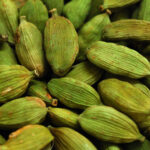Cattleya orchids, often referred to as the “queen of orchids,” are renowned for their large, fragrant, and vividly colored flowers. Originating from Central and South America, these stunning plants have become popular among orchid enthusiasts and gardeners. Despite their reputation for being somewhat challenging to grow, proper care can ensure these orchids thrive and bloom beautifully. Here’s a comprehensive guide to caring for Cattleya orchids.
Light Requirements
Cattleyas need bright, indirect light to flourish. Ideally, they should receive about 4-5 hours of bright, filtered light each day. Direct sunlight can scorch their leaves, so placing them near an east or west-facing window with sheer curtains can provide the right balance. If the leaves turn yellowish, it might indicate too much light, whereas dark green leaves often signify insufficient light.
Temperature and Humidity
Cattleyas prefer a temperature range of 65-80°F (18-27°C) during the day and slightly cooler temperatures at night, around 55-60°F (13-16°C). Maintaining a humidity level of 50-60% is ideal. You can increase humidity by using a humidity tray, placing a shallow dish of water near the plant, or using a room humidifier.
Watering
Watering Cattleya orchids properly is crucial. They prefer to dry out slightly between waterings. Typically, watering once a week is sufficient, but this can vary based on environmental conditions. Ensure the potting medium is well-draining to prevent waterlogging, which can lead to root rot. When watering, thoroughly drench the potting medium and allow excess water to drain out completely.
Potting and Medium
Cattleyas thrive in a well-draining potting mix. A combination of bark, perlite, and charcoal is commonly used.
Repotting should be done every 2-3 years or when the potting medium breaks down and no longer drains well.
The best time to repot is in the spring, just after the plant has finished blooming and new growth appears.
Fertilizing
Regular feeding is essential for healthy growth and blooming. Use a balanced orchid fertilizer, such as 20-20-20, diluted to half-strength. Fertilize every two weeks during the growing season (spring and summer) and reduce to once a month during the dormant period (fall and winter). Be sure to flush the potting medium with plain water occasionally to prevent salt buildup.
Air Circulation
Good air circulation is vital to prevent fungal and bacterial infections. Ensure your Cattleya orchid is placed in a well-ventilated area. You can use a small fan to keep the air moving around the plant, especially in more humid environments.
Pruning and Maintenance
Regular maintenance helps keep your Cattleya orchid healthy. Remove any dead or yellowing leaves and spent flower spikes using sterilized scissors. This not only improves the plant’s appearance but also reduces the risk of disease.
Pest Management
Cattleyas can be susceptible to pests like aphids, mealybugs, and spider mites. Regularly inspect your plant for signs of pests and treat them promptly with insecticidal soap or neem oil. Keeping the plant healthy and maintaining good air circulation can help prevent infestations.
Blooming
Cattleya orchids typically bloom once a year, though some species and hybrids may bloom more frequently. To encourage blooming, provide adequate light, maintain proper temperature and humidity, and follow a regular feeding schedule. After blooming, give the plant a rest period with slightly reduced watering and feeding to prepare for the next bloom cycle.
Caring for Cattleya orchids requires attention to detail, but the reward of their stunning, fragrant blooms makes it well worth the effort. By providing the right light, temperature, humidity, and regular maintenance, you can enjoy the beauty of these orchids year after year.
Dealing with Common Problems
Even with the best care, Cattleya orchids can encounter issues. Here are some common problems and their solutions:
Yellow Leaves: This can be caused by overwatering, underwatering, or insufficient light. Check the roots and adjust your watering schedule, and ensure the plant is getting enough but not too much light.
Leaf Spots: Brown or black spots on leaves can indicate fungal or bacterial infections. Remove affected leaves and improve air circulation. Treat with a fungicide if necessary.
Root Rot: Often a result of overwatering or poor drainage. Check roots periodically and repot if necessary. Ensure the potting medium is well-draining and water less frequently.
Failure to Bloom: If your Cattleya isn’t blooming, it may not be getting enough light. Ensure it receives bright, indirect light for several hours a day. Also, ensure you are providing the right temperatures and feeding regularly.
Propagation
Cattleyas can be propagated through division. Here’s how:
Timing: The best time to divide your Cattleya is during repotting, typically in the spring.
Prepare: Sterilize your cutting tools and prepare new pots with fresh potting medium.
Divide: Carefully remove the orchid from its pot and gently shake off the old medium. Locate natural divisions in the plant, typically where new growth is emerging, and cut the rhizome to create divisions with at least 3-4 pseudobulbs each.
Plant: Place each division in a new pot, ensuring the roots are spread out over the potting medium. Add medium around the roots and water lightly.
Care: Provide the same care as for mature plants, but be extra cautious about watering as the new divisions establish themselves.
Choosing the Right Cattleya
With numerous species and hybrids available, selecting the right Cattleya can be overwhelming. Here are a few tips:
Beginners: Start with hybrids, which are generally more forgiving and adaptable to various growing conditions.
Fragrance: If you love fragrant flowers, look for species like Cattleya walkeriana or hybrids known for their scent.
Color and Size: Choose based on your preference for flower color and size. Cattleyas come in a wide range of colors, from vibrant purples and pinks to whites and yellows.
Seasonal Care
Cattleyas have specific care needs depending on the season:
Spring and Summer: This is the active growing season. Increase watering and feeding frequency. Ensure they receive ample light and maintain high humidity.
Fall and Winter: Growth slows down. Reduce watering and feeding. Maintain good light exposure, but watch out for potential cold drafts. Keep an eye on humidity levels, as indoor heating can dry the air.
Indoor vs. Outdoor Growing
Cattleyas can be grown both indoors and outdoors, depending on your climate.
Indoors: Provide bright, indirect light, such as near an east or west-facing window. Use grow lights if natural light is insufficient. Maintain consistent humidity and temperature.
Outdoors: In mild climates, Cattleyas can be grown outside. Ensure they are in a shaded area to avoid direct sunlight. Bring them indoors if temperatures drop too low or during inclement weather.
Caring for Cattleya orchids can be a rewarding experience for both novice and experienced growers. With their stunning, fragrant blooms, these orchids can be a beautiful addition to any home or garden. By understanding their specific needs for light, temperature, humidity, and regular maintenance, you can ensure your Cattleyas thrive and provide spectacular displays year after year. Remember, patience and attention to detail are key in orchid care, and the beauty of the blooms will make all your efforts worthwhile.






